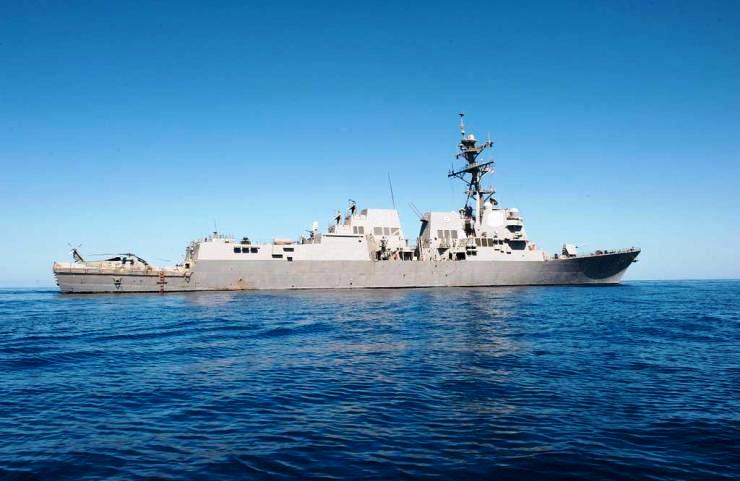Yemen: Houthi piracy in the Red Sea.

Recent Houthi piracy attacks heighten global maritime security concerns in the Red Sea, despite international efforts of deterrence.
The issue of maritime security and insecurity in the Red Sea and the Bab el-Mandeb area is primarily tied to Yemen’s militarized islands. Since 2015, Yemeni islands are mostly controlled, as for its coastline, by armed groups: the Iranian-backed Yemen’s Houthis and a variety of forces supported by the United Arab Emirates (UAE).
In the context of the Yemen war, the Houthis have repeatedly attacked Saudi and Emirati targets using various maritime warfare tactics. Recently, amid the Hamas-Israel war, the Houthis are turning to piracy –alongside aerial attacks- against Israeli targets in the Red Sea.
On November 19th, the hijacking by the Houthis of an Israeli-related cargo ship, “Galaxy Leader”, has turned the light on the risks to freedom of navigation in the Red Sea. The ship was seized off the Yemeni Western coast and diverted to the close Houthi-controlled Hodeida port city. However, this is not the first time the Houthis perform a
piracy attack in these waters.
Between January-April 2022, the Iranian-backed armed group, controlling much of North-Western Yemen, seized an Emirati cargo ship, “Rawabi”, while it was sailing off the Hodeida coast. The 11-member crew was released only four months later, due to the national truce brokered in Yemen.
In recent years, maritime security in the Red Sea and the Bab el-Mandeb area has been negatively impacted by the Yemen war. Since 2015, the Houthis have attacked several times both military and commercial targets in the Red Sea and the Bab el-Mandeb: Saudi warships, the US Navy, Saudi oil tankers and coastal infrastructures, Emirati civilian ships.
Maritime attacks from Yemen were performed with drones, missiles, rockets, remoted-controlled boats; floating sea mines were also planted to disrupt navigation. Between 2015-17, the Bab el-Mandeb strait was the epicentre of Houthis’ attacks.
Since 2017, Emirati-backed Yemen’s armed groups have taken control of the Bab el-Mandeb area pushing the Houthis to withdraw, and thus securing the choke-point’s neighbourhood. Therefore, the flashpoint area has moved to the Southern Red Sea, where the Houthis are still in control of Hodeida, the main port of the Yemeni Western coast.
As for its coasts, Yemen’s islands since 2015 have undergone a process of gradual militarization. First, the Houthis have extended their control to a series of Red Sea islands off the Hodeida coast: these have become linchpins for maritime attacks.
According to the independent Sana’a Center for Strategic Studies, since early 2023 the Houthis have been stepping up their military presence off the Hodeida coast, also performing marine patrols. Moreover, Houthis’ naval forces unprecedentedly clashed (in June 2023) with the National Resistance Forces (the Western coast coalition headed by Tareq Saleh), stationed at Zuqar.
In late 2015, the Saudi-led Coalition retook Zuqar, an island of the Hanish archipelago (between Yemen and Eritrea), previously seized by the insurgents, and established a military outpost for the Coalition.
Regarding the Emirati-backed groups, Tareq Saleh’s National Resistance Forces, a coalition which oppose the Houthis while not formally part of the regular security sector, are stationed at Zuqar (Southern Red Sea) and Perim/Mayyun (Bab el-Mandeb).
In 2021, Tareq Saleh stated during an interview that some units of the National Resistance Forces are deployed in Perim, where these are also affiliated with the Yemeni Coast Guard. The small island of Perim hosts an airbase reportedly built by the UAE in 2021.
In the Arabian Sea, Yemen’s Socotra archipelago is a natural gatekeeper to the Bab el-Mandeb, given its geographic location. Since 2018 onwards, Socotra and another island of the archipelago, Abd Al-Kuri, have seen rising military presence, primarily due to the UAE.
When the pro-secessionist-and Emirati-backed- Southern Transitional Council (STC) took control of the island in 2020, the local Coast Guard (still loyal to the internationally-recognized government) had to withdraw from its positions, while one of its battalions joined the STC.
Socotra would host some Emirati-built military installations comprising an Emirati intelligence base in cooperation with Israel, which could deploy Israeli-made sensors to counter Iranian-made missiles and drones). Recently, a military airport would have also been
built in Abd Al-Kuri.
Maritime security in the Red Sea is an issue of global concern. For trade and energy reasons, European, American, Arab and Asian powers are all interested in protecting freedom of navigation along the waterway connecting the Suez Canal with the Indian Ocean.
In recent years, several initiatives have been taken to strengthen Red Sea security, also at the multilateral level. For instance, a US-led task force, the CTF-153, was launched in 2022 to improve maritime security in the area and countering weapons smuggling (of whom the Houthis are the main recipients).
Before and after the start of the Hamas-Israel war, the US has deployed warships and marines in the Red Sea. Moreover, since late October, Israel has strengthened its defense posture to deter Houthis’ attacks.
However, deterrence hasn’t been effective. Rather, the Houthis seem emboldened by the ´stage` the Israel-Hamas war has been indirectly offering them, as well as by the possibility to engage with the US Navy. At the same time, Saudi-Houthi direct talks aimed at reaching a bilateral ceasefire in Yemen are not preventing the armed group from performing multidimensional attacks (aerial and maritime) in and through the Red Sea, with uncertain prospects also for Saudi national security.
While the Bab el-Mandeb area looks safer now, due to the deployment of UAE-backed forces, the Southern Red Sea represents a rising global security threat. As long as the Houthis will hold coastal territories, Yemen’s Western islands will continue to be unpredictable stoplights in the Red Sea. (Photo: The guided-missile destroyer USS Nitze (DDG 94) transits the Arabian Sea. MC3 Jeff Atherton/US Navy)
Eleonora Ardemagni/ISPI



